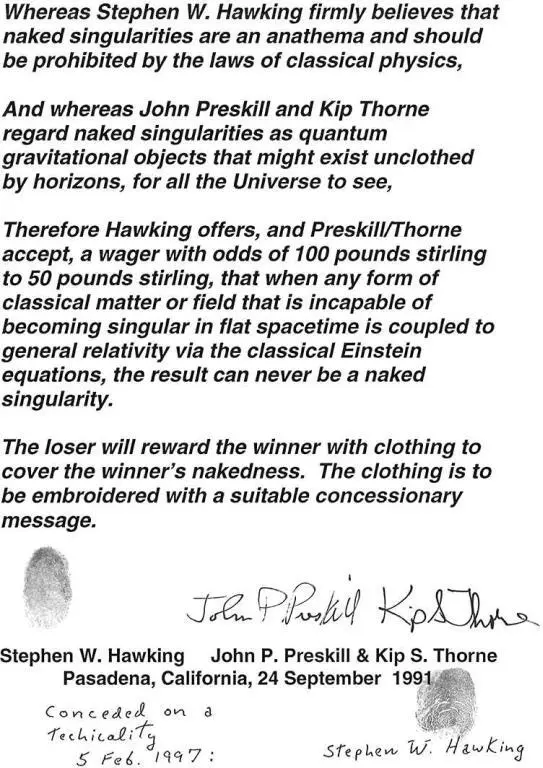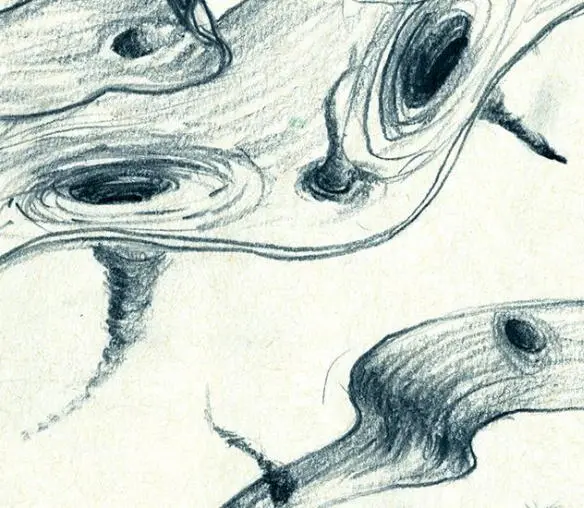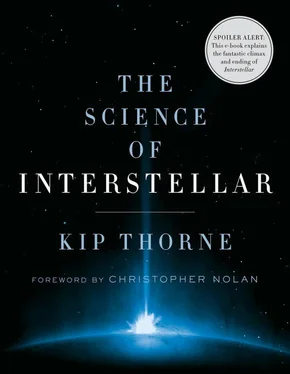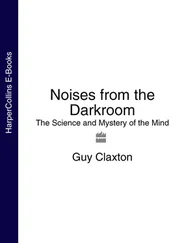In 1962 I moved from Caltech (my undergraduate school) to Princeton University, to study for a PhD in physics. I chose Princeton because John Wheeler taught there. Wheeler was that era’s most creative genius, when it comes to Einstein’s relativistic laws. I wanted to learn from him.
One September day, with trepidation I knocked on the door of Professor Wheeler’s office. It would be my first meeting with the great man. He greeted me with a warm smile, ushered me in, and immediately—as though I were an esteemed colleague, not a total novice—began discussing the mysteries of the implosions of stars. Implosions that produce black holes with singularities in their cores. These singularities, he asserted, “are a place in which the fiery marriage of Einstein’s relativistic laws with the quantum laws is consummated.” The fruits of that marriage, the laws of quantum gravity, come into full blossom in singularities, Wheeler asserted. If we could understand singularities, we would learn the laws of quantum gravity. Singularities are a rosetta stone for deciphering quantum gravity.

Fig. 26.5. John Wheeler in 1971, lecturing about singularities, black holes, and the universe.
From that private lecture, I emerged a convert. From Wheeler’s public lectures and writings, many other physicists emerged as converts and embarked on a quest to understand singularities and their quantum gravity laws. That quest continues today. That quest produced superstring theory, which in turn led to a belief that our universe must be a brane residing in a higher dimensional bulk (Chapter 21).
Naked Singularities?

It would be fabulous if we could find or make a singularity outside a black hole. A singularity not hidden beneath a black hole’s event horizon. A naked singularity . Then in Interstellar the Professor’s task could be easy. He might extract the crucial quantum data from a naked singularity in his NASA lab.
In 1991, John Preskill and I made a bet about naked singularities with our friend Stephen Hawking. Preskill, a Caltech professor, is one of the world’s great experts on quantum information. Stephen is the “wheelchair guy” who appears on Star Trek , The Simpsons , and The Big Bang Theory . He also happens to be one of the greatest geniuses of our era. John and I bet the laws of physics permit naked singularities. Stephen bet they are forbidden (Figure 26.6).
None of us thought the bet would be resolved quickly, but it was. Just five years later Matthew Choptuik, a postdoctoral student at the University of Texas, carried out a simulation on a supercomputer that he hoped would reveal new, unexpected features of the laws of physics; and he hit the jackpot. What he simulated was the implosion of a gravitational wave. [47] The thing he simulated was actually something called a scalar wave, but that is an irrelevant technicality. A few years later Andrew Abrahams and Chuck Evans at the University of North Carolina repeated Choptuik’s simulations using a gravitational wave and got the same result: a naked singularity.
When the imploding wave was weak, it imploded and then disbursed. When it was strong, the wave imploded and formed a black hole. When its strength was very precisely “tuned” to an intermediate strength, the wave created a sort of boiling in the shapes of space and time. The boiling produced outgoing gravitational waves with shorter and shorter wavelengths. It also left behind, at the end, an infinitesimally tiny naked singularity (Figure 26.7).

Fig. 26.6. Our bet about naked singularities.

Fig. 26.7. Left : Matthew Choptuik. Middle : An imploding gravitational wave. Right : The boiling produced by the wave, and the naked singularity at the center of the magnifying glass.
Now, such a singularity can never occur in nature. The required tuning is not a natural thing. But an exceedingly advanced civilization could produce such a singularity artificially by precisely tuning a wave’s implosion, and then could try to extract the laws of quantum gravity from the singularity’s behavior.
Upon seeing Choptuik’s simulation, Stephen conceded our bet—“on a technicality,” he said (bottom of Figure 26.6). He thought precise tuning unfair. He wanted to know whether naked singularities can occur naturally , so we renewed our bet with a new wording that the singularity must arise without any need for precise tuning. Nevertheless, Stephen’s concession, in a very public venue (Figure 26.8) was a big deal. It made the front page of the New York Times .

Fig. 26.8. Hawking conceding to Preskill and Thorne at a 1997 Caltech lecture by Hawking.
Despite our renewed bet, I doubt that naked singularities do exist in our universe. In Interstellar , Dr. Mann firmly asserts that “the laws of nature prohibit a naked singularity,” and Professor Brand never even mentions that possibility. Instead, the Professor focuses on singularities inside black holes. Those, he thinks, are the only hope for learning the laws of quantum gravity.
The BKL Singularity Inside a Black Hole

In Wheeler’s era (the 1960s), we thought of a singularity inside a black hole as like a sharp point. A point that squeezes matter until the matter becomes infinitely dense and is destroyed. That’s how, until now in this book, I have depicted a black hole’s singularity (Figure 26.9, for example).
Since Wheeler’s era, mathematical calculations with Einstein’s laws have taught us that these pointy singularities are unstable. To create them inside a black hole requires precise tuning. When perturbed ever so slightly, for example by something falling in, they change enormously. Change into what?
Three Russian physicists—Vladimir Belinsky, Isaac Khalatnikov, and Eugene Lifshitz—used long, complicated calculations to guess the answer, in 1971. And in the 2000s, when computer simulations became sufficiently advanced, their guess was confirmed by David Garfinkle at Oakland University. The resulting, stable singularities now carry the name BKL in honor of Belinsky, Khalatnikov, and Lifshitz.

Fig. 26.9. Lia Halloran’s fanciful drawing of several black holes with singularities at their pointy tips. [A segment out of Fig. 4.5.]
A BKL singularity is chaotic. Highly chaotic. And lethal. Highly lethal.
In Figure 26.10, I depict the warping of space outside and inside a fast-spinning black hole. The BKL singularity is at the bottom. If you fall into this black hole, its interior at first is smooth and perhaps pleasant. But as you near the singularity, the space around you begins to stretch and squeeze in a chaotic pattern. And tidal forces begin to stretch and squeeze you, chaotically. The stretch and squeeze are gentle at first, but quickly they become strong, then ultrastrong. Your flesh and bones are pummeled and give way. Then the atoms of which your body was made are pummeled and give way—distorted beyond recognition.
Читать дальше


















